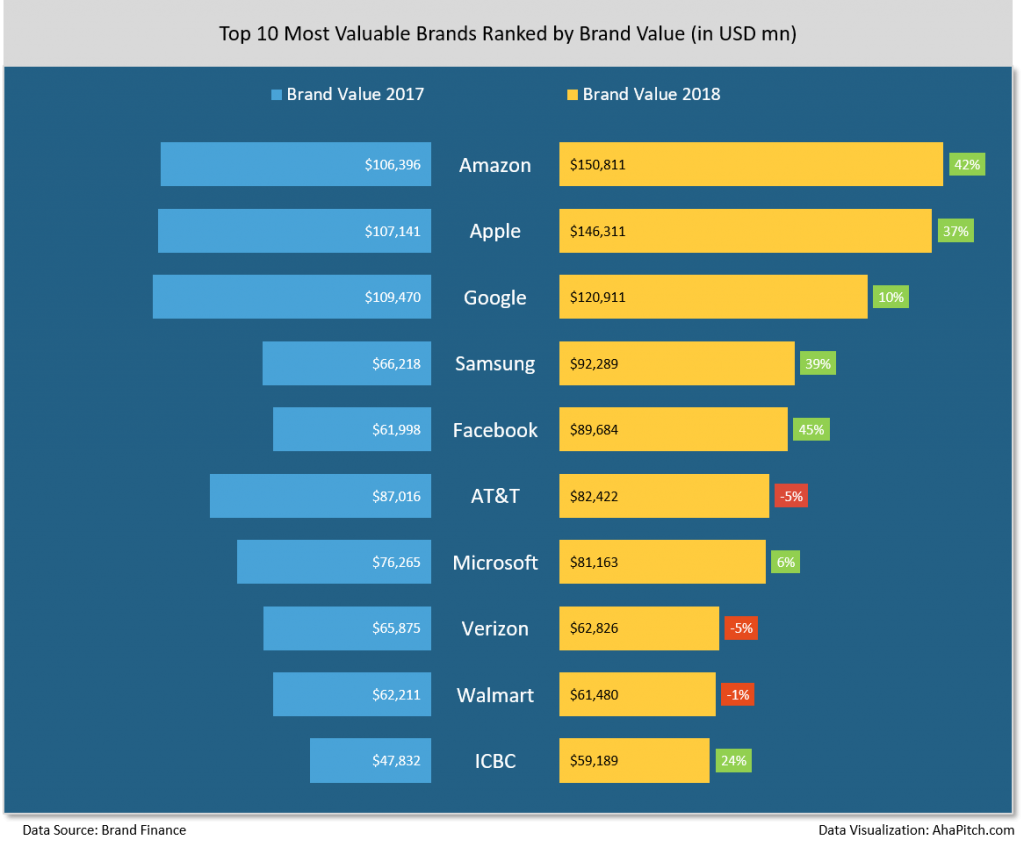
There are several companies producing annual rankings of the world’s most valuable brands. However, only three currently matter: “Best Global Brands” by Interbrand (a brand consultancy), “BrandZ Top 100 Most Valuable Global Brands” by Millward Brown (a research agency) and “Global 500” by Brand Finance (a valuation company).
In the last few years, it has been heavily debated whether these rankings make sense at all and whether their role is anything more than just PR for the companies publishing them. The main argument of their opponents is that they provide different values to the same brands. Some people go as far as claiming that they undermine the whole marketing discipline as “fluff” because of the discrepancies. We, however, believe it’s absolutely normal that valuations differ depending on the analysts conducting the calculation and on the methodology used. This happens in other types of valuations as well. For example, when a business is for sale, different companies are ready to pay a different price for the same entity using similar, highly scientific, financial methods of valuation.

All three rankings use a similar approach to brand valuation, that is all use the company’s income as a starting point. Each of them tries to estimate something rather intangible, that is how much of future profits can be attributed to the brand itself. However, all three have different methodologies of getting to the final number and today we will try to explain these differences in the simplest terms.
“Best Global Brands” by Interbrand
Interbrand’s methodology consists of three steps. First, the company’s profit is analysed and the future profit estimated. Secondly, the role of the brand in the purchasing decision (so-called RBI: Role of Brand Index) is calculated using primary or secondary research; alternatively, an expert panel decides how much of a purchasing decision can be attributed solely to the brand (e.g., 25% or 75%), excluding other factors such as price, functional benefits or availability. The last step is to estimate a brand’s strength in comparison to its competitors. This index consists of 10 factors, which Interbrand believes are a good predictor of the brand’s future performance.
The biggest advantage: overall reliability.
Interbrand was one of the first companies in the world to do brand valuation. The company has huge experience in this field and their “Best Global Brands” list is by far the most popular ranking.
How its transparency could be improved?
We would like to know exactly how the role and the strength of the brands are estimated. Who are the experts from the mysterious panels and what are the 10 factors defining the brand strength.

“BrandZ Top 100 Most Valuable Global Brands” by Millward Brown
BrandZ, similarly to Interbrand, uses a so-called “income split method” to estimate the value of a brand. The initial process looks similar as it is about analysing the brand’s profits and estimating future profits. What happens next is what differentiates BrandZ’s ranking. While Interbrand relies heavily on its analysts’ expertise and their ability to estimate the role and the strength of the brand, BrandZ uses for that a huge consumer panel, that is three million people in 50 countries. The factors analysed in the research include: meaningfulness of the brand, its uniqueness and salience (spontaneous awareness).
The biggest advantage: consumers’ perspective taken into account.
This is the only ranking that uses real consumer data to estimate the role of the brand in the purchasing decision, rather than opinions of industry experts.
How its transparency could be improved?
We still don’t know how being meaningful, different and salient can be translated into financial metrics. This needs clarification.
“Global 500” by Brand Finance
Brand Finance uses a slightly different methodology than Interbrand and Millward Brown to estimate how much of the company’s profit is attributable to a brand. It is called the royalty relief method and it is apparently more popular among accountants and finance people. Its main assumption is based on taking into account what a company would pay for use of the brand if it didn’t own it. Brand Finance, similarly to Interbrand, calculates the brand strength (a number from 0 to 100) based on the opinions of its experts rather than consumers.
The biggest advantage: good for finance people.

Brand Finance’s ranking tries to build an image of a tool, which is better adjusted to the finance people’s needs as it is using a methodology they know and approve of (not that other methodologies are wrong).
How its transparency could be improved?
It is not clear how the brand strength is measured, what factors are taken into account and who are the people who decide whether a brand is strong or not.
The three companies preparing annual rankings: Interbrand, Millward Brown and Brand Finance use a similar, income-based approach to brand valuation. However, because of different methodologies and the human factor, their calculations differ. And although these differences are understandable, what each of the ranking lacks is full transparency with regard to their respective methodologies.